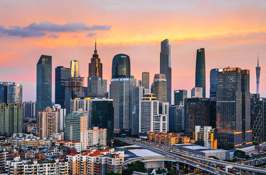Authorities gear up effort to continue rural vitalization campaign
Zhanjiang renamed its poverty relief and development office -- the rural revitalization bureau -- recently to consolidate poverty alleviation results and make rural areas thrive.
The new bureau also promotes the living environment in villages and a new round of rural reforms, local authorities said.
Zhanjiang's first rural revitalization academy was launched on March 18. It is the third of its kind nationally after those opened in Beijing and Sichuan province. It is expected to train professionals in the city to modernize agriculture and implement the city's rural revitalization strategy.
It will also play a role in cementing Zhanjiang's achievements in poverty alleviation, solving problems related to farmers and helping plan and manage sectors of modern agriculture, officials said.
A training center for rural revitalization professionals was established on the same day in Zhanjiang. Zhang Jianwen, deputy secretary-general of the city's government, said the center needs to launch projects to nurture skilled farmers and foster leading companies and farmers' cooperatives.
It should help agricultural professionals, who are well educated, aware of technologies and good at operations, to become a force of rural revitalization, Zhang said.
Official statistics showed Zhanjiang once had 81,680 poor households and an impoverished population of 233,737, accounting for one-seventh of Guangdong province's poor population. All these people in Zhanjiang had escaped poverty by the end of May 2020.

Villagers celebrate their poverty alleviation success during a flash mob event in Zhanjiang. CHINA DAILY
A total of 284,000 impoverished people were transferred elsewhere for employment between 2016-20. Per capita disposable income of those people had increased from some 4,970 yuan ($780) in 2015 to 14,736 yuan in 2020, a rise of 196.51 percent.
Zhanjiang took the lead in formulating a city-level plan for rural revitalization nationally in January 2018.
It announced the rankings of county-level regions' rural living environment improvement on a monthly basis and conducted an appraisal annually.
Zhanjiang was evaluated as "excellent" in Guangdong's performance appraisal of promoting rural revitalization in 2019.
The city has relied heavily on industrial development for rural revitalization, aiming to establish modern agricultural systems and promote the healthy development of its agricultural economy. The moves are highlights of the city's poverty alleviation and rural revitalization.
Zhanjiang has built four national-level and 14 provincial-level industrial parks for developing modern agriculture in recent years. These have helped 45,559 farmers to find jobs.
Zhanjiang earmarked 88.74 million yuan to support 90 poor villages to develop specialty products and industries in recent years. It has fostered 178 large leading agricultural companies in recent years.
The city also gave priority to boosting the living environment in rural areas. It has improved roads for villages, renovated numerous dilapidated buildings and guaranteed safe drinking water.
Zhanjiang created a project featuring Guangdong cuisine to help lift local people out of poverty in 2017. It set up four provincial-level Guangdong cuisine master studios and four provincial-level Guangdong cuisine training centers that provided training to poor laborers.
Thanks to effective implementation plans for rural revitalization, many villages in Zhanjiang have gained popularity with tourists.
Fangpo village in Xuwen county is a highlight of Guangdong's countryside tours. It received more than 300,000 visits which helped more than 150 villagers into employment in 2020. Its tourism revenue reached about 28 million yuan and the per capita income of villagers amounted to 32,000 yuan last year.
Wencun village in Wuchuan city, under the administration of Zhanjiang, has become noted as the time-honored home of sweet potatoes in China. As a result, it has expanded its market for poverty alleviation products. The per capita income of its villagers was 27,263 yuan in 2020, four times more than that of 2015.



 Print
Print Mail
Mail

